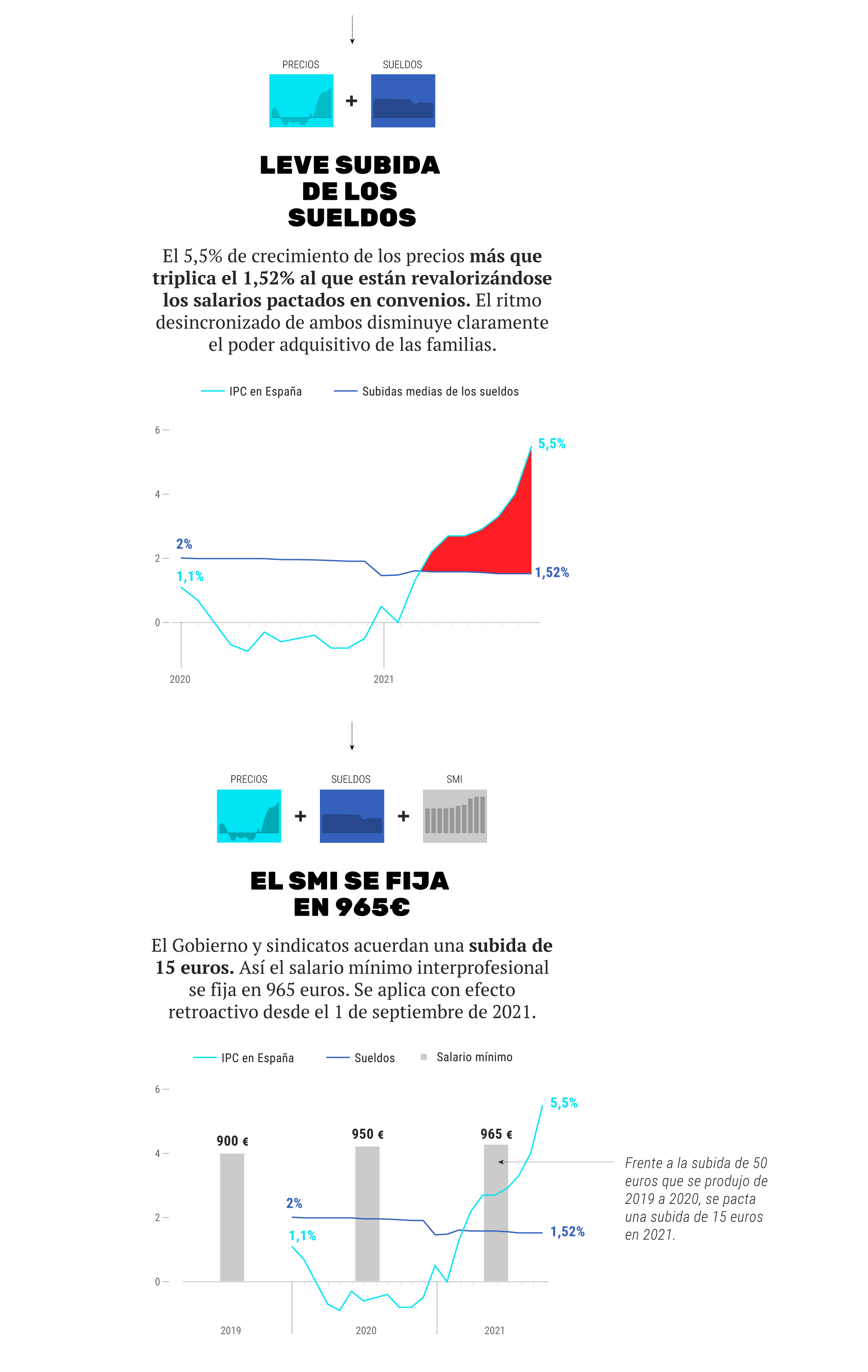ALEJANDRA OLCESE
@AlejandraOlcese
ELSA MARTÍN (GRAPHICS)
@elsa_millan
Updated Friday, October 29, 2021-02: 00
Share on Facebook
Share on Twitter
Send by email
Comment
The 5.5% rise in the
Consumer Price Index
(
CPI
) in October, levels not seen since 1992, has triggered fears that
inflation will
be installed
that will hinder the economic recovery, but the situation in which the country is very different from then.
This is how different economists consulted by this medium explain it, who send a message of tranquility: there is no aspect that suggests that inflation has come to stay.
But the fear of price rises is spreading and unions are beginning to press for
wages to rise in line with the CPI
, as will
pensions
and
public salaries
.
Although these price increases were not seen in Spain for
29 years
, there are big differences between the scenario now and then, starting with the duration.
The
IPC stringing nine months now rising
but has only been exceeded 3% in the last quarter, and you can not lose sight that inflation in the Eurozone -and Spain- had a decade at very low levels.
In
1992
,
"there was a trend,
the inflation that
existed
then was a consequence of structural conditions. Since the 1970s, a problem of differential inflation has been dragging on in Spain with respect to Europe and it must also be taken into account that in 1988 there was a general strike and that pushed up wages, "explains economist
Manuel Hidalgo, a
collaborator of EsadeEcPol
, to EL MUNDO
.
The second difference is that three decades ago the rise in prices was generalized and
affected all goods and services
, while now
energy products
are the
main responsible for this rise in prices.
"There was an indexation of the economy and this made inflation permanent. Now that does not happen, the heading that has risen is energy, which is closely linked to the rising cost of raw materials," says
Gregorio Izquierdo
, director of the
Institute of Economic Studies
.
Prices are growing worldwide because there has been a
supply
shock
(demand has recovered very quickly and supply has not been able to meet it) and at the same time there have been
breaks in global supply chains
due to the lack of inputs and raw materials (which in turn affects prices).
The perfect Storm.
The risk of an inflationary spiral
But although overall inflation rises, the
underlying
which excludes the price of energy and food (more volatile items) - up 1.4% in October, four points less than the overall CPI.
To this is added that the CPI is conditioned on this occasion by the
"base effect",
that is, by a comparison with a period in 2020 marked by the economic contraction that caused the pandemic and by falling prices.
Although the scenario of then is far from resembling that of now, there is a risk that this inflation will become chronic if it translates into "
second-round effects
", that is, if it generates
wage increases
that in turn produce more price increases, which would open the door to an
inflationary spiral.
It is important to prevent this from happening, but
the public sector sets a bad precedent
by indexing the rise in
pensions
and
civil servants'
salaries
according to the CPI.
"I think this episode will be transitory. It comes from exceptional situations in energy and certain raw materials and components, which should gradually disappear. But there is a certain risk that it will become chronic if we get nervous and we all try to recover the loss at the same time, in salaries and benefits, "says
Ángel de la Fuente
, director of
Fedea
.
Here's the key: if second-round effects are minimized, inflation is more likely to be transitory. If this does not happen or if panic sets in and central banks are forced to
raise interest rates
(the president of the ECB herself,
Christine Lagarde
, acknowledged this Thursday that at her monetary policy meeting they had only talked about "inflation, inflation and inflation "), then
the economic recovery
could be
frustrated
, especially given the high level of debt of companies, families and states.
"People are confusing what inflation is at a given moment with a consolidated inflationary trend. It is about
not overreacting as if it were a lasting trend
. A rise in interest rates would spoil the recovery," warns
Enrique Féas
, principal investigator at the
Royal Institute Elcano.
This expert also points out that in recent years there have been a series of factors that have tended to
lower prices
(such as aging or the introduction of China into world trade) and these aspects "have not disappeared overnight" .
Source:
INE and Omie
Graphics:
Elsa Martín
Art direction:
María González Manteca.
According to the criteria of The Trust Project
Know more
INE
economy
savings and consumption
HBPR
Savings and ConsumptionThree tricks to reduce what you will pay for your mortgage
Saving energyWorld Energy Saving Day: Committed and competitive companies, all in one
Savings and Consumption What mistakes to avoid when appraising a home to sell it
See links of interest
La Palma volcano
Last News
Holidays 2021
2022 business calendar
Home THE WORLD TODAY
Podcast Economia
How to do
Celta de Vigo - Real Sociedad
Granada CF - Getafe
Olympiacos Piraeus - Fenerbahce Istanbul
Maccabi Fox Tel Aviv - Barça
Olimpia Milan - Red Star

